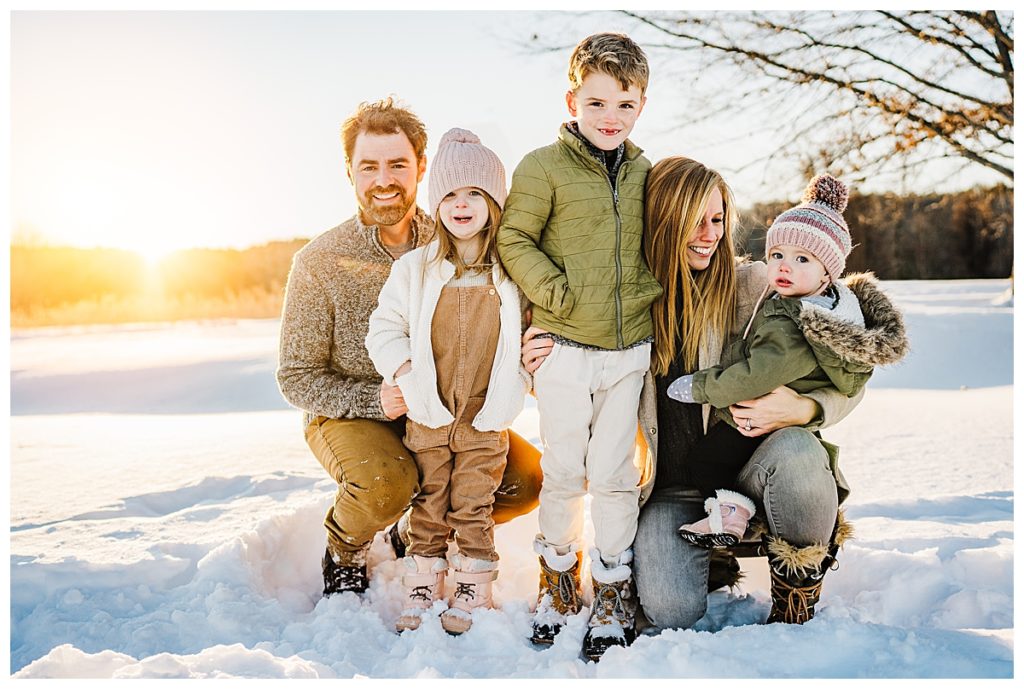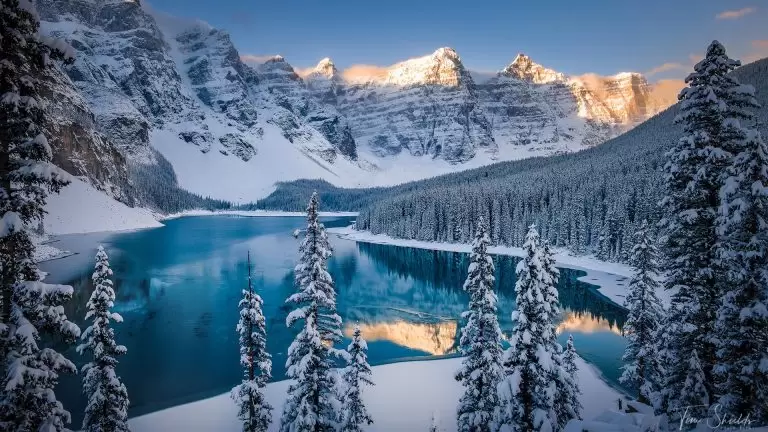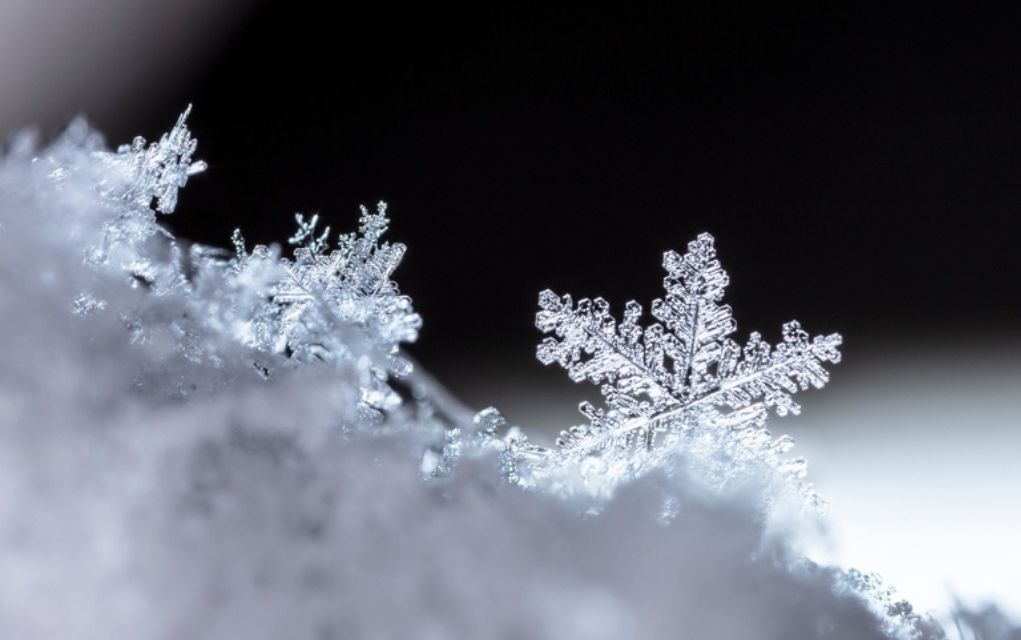Winter photography is not just about capturing snowy landscapes or freezing moments in time—it’s about embracing the magic and challenge that the season brings. Whether you’re an experienced photographer or just getting started, winter offers an unparalleled opportunity to create stunning, unique images that tell stories of cold, beauty, and resilience. But to truly master winter photography, you need more than just the right gear. You need to understand how to approach these crisp, quiet landscapes in a way that engages both you and your viewers.
Let’s dive into the heart of winter photography with tips that go beyond the technicalities. These strategies will help you connect with the season’s essence and turn even the coldest of days into compelling visual narratives.
1. Embrace the Winter Light
Winter light has a unique quality—soft, diffuse, and often more striking than during other seasons. The sun hangs lower in the sky, casting a golden hue during the early morning and late afternoon hours. But while winter light can be breathtaking, it requires understanding and appreciation to get the best out of it.
❄️Golden Hours Are Extra Special
The “golden hour” just after sunrise and before sunset is one of winter’s best-kept secrets. With the sun lower on the horizon, the light is more subdued and forgiving, casting long shadows and enhancing the textures of the snow. This is the time to get out and shoot, especially if you want to capture magical, atmospheric winter landscapes. Think of wide vistas where snow-covered trees or fields are bathed in warm, golden light. The cool, crisp air will only enhance that warmth in your images, creating a feeling of depth and serenity.
❄️Blue Hour Magic
On the flip side, the blue hour—the brief period before sunrise and after sunset—offers a completely different atmosphere. In winter, when the air is cold and the light is low, the blue hour can feel particularly dramatic. The sky deepens into a rich blue, while snow, frozen lakes, and frosted trees take on otherworldly hues. Embrace this ethereal light for moody shots of your winter world, whether you’re photographing a quiet street corner, a silhouette of a lone tree, or a snowstorm just settling in.
❄️Reflective Snow Can Be Your Friend
One of the greatest challenges when shooting snow is the overexposure that often occurs. Snow is bright, which can trick your camera’s light meter into thinking the scene is too dark. To get the snow looking pure white, you often need to overexpose your image slightly (usually by 1 to 2 stops). This ensures that the snow retains its brightness and texture. But don’t just shoot snow for the sake of snow. Look for reflections—the way snow reflects the sky, buildings, or trees. These subtle mirrors create an added layer of beauty and depth in your compositions.

2. Gear Up, But Stay Nimble
While gear can make a huge difference, winter photography often requires a different mindset. You’re not just capturing moments; you’re battling the cold, managing the elements, and adapting to challenging conditions. Here are some ways to make sure your gear serves you well in these conditions:
❄️Protect Your Camera from the Elements
Cold and snow can be hard on your camera. Many modern cameras come with some level of weather-sealing, but it’s always good to take extra precautions. Use a weatherproof camera bag to protect your gear, and consider using lens hoods to keep snowflakes and rain off your lens. In snowstorms or wet conditions, a plastic bag or rain cover can protect the camera body. If the temperature drops drastically, take breaks to warm up your camera gear and batteries, as they tend to lose charge faster in extreme cold.
❄️Layer Up with Lenses
A wide-angle lens (like a 16-35mm or 24-70mm) is perfect for vast winter landscapes, where you want to capture sweeping fields of snow or distant mountains. But don’t neglect your telephoto lenses, either. A 70-200mm or longer lens will help you zoom in on fine details—frost-covered branches, wildlife, or the way light plays on distant hills. These lenses compress the scene, making distant objects look closer together, which can create dramatic effects in snowy conditions.
For capturing intricate details like ice crystals or snowflakes, a macro lens is essential. Snowflakes have a stunning symmetry and design that’s hard to capture with anything other than a macro lens. Don’t let the small moments slip away—get up close and personal with nature’s winter artwork.
❄️Stay Mobile
Winter photography often means long walks through snow, and sometimes in remote areas. A tripod is helpful for slow shutter speeds in low-light conditions, but it can also be cumbersome in the snow. If you’re trekking in deep snow, consider a lightweight, portable tripod that’s easy to carry or a monopod, which can give you stability with less bulk.
3. Master the Snowy Exposure

One of the most common struggles when shooting in snow is ensuring that the snow looks white, not gray. Snow can easily fool your camera’s metering system into underexposing the scene, which can make it appear dull or flat. Here’s how to tackle the exposure challenges that come with snowy landscapes:
❄️Use Exposure Compensation
To get snow looking its best, you often need to dial in positive exposure compensation—around +1 to +2 stops in most cases. This overexposes the snow, allowing it to retain its brightness and white detail. If you don’t adjust for this, the snow will appear gray and lack the detail and texture that make winter photos so striking.
❄️Experiment with Manual Mode
In manual mode, you can control both the shutter speed and aperture, allowing you to fine-tune the exposure for snow scenes. If you’re shooting wide landscapes with snow in the foreground, try adjusting your settings to get the right balance. This will also allow you to control how much of the scene is in focus (depth of field) and how much light you let into the shot.
❄️Check Your Histogram
A helpful tool when shooting winter scenes is your camera’s histogram. The histogram shows the distribution of light and dark in an image, helping you adjust the exposure in real time. Pay close attention to the right side of the histogram. If you see the exposure creeping into the far right, you’re likely overexposing your image and losing important snow detail. On the flip side, if the graph is heavy on the left, your image may be underexposed.
❄️Adjust White Balance
Winter light can have a cool, bluish tint, which often translates into cold-looking photos. While this can be beautiful in its own right, you might want to warm things up to balance the color tones in your image. Try adjusting your white balance settings to “Daylight” or manually setting a color temperature that adds a touch of warmth to the scene.
4. Creative Composition in Winter
Winter landscapes can sometimes feel desolate or barren, but they also offer opportunities for powerful, minimalist compositions. The blank canvas of snow is perfect for creating stark contrasts and focusing on the key elements of your scene. Here are some composition techniques to help you capture the beauty of winter’s quieter moments:
❄️Play with Negative Space
One of the hallmarks of winter photography is the wide expanses of snow that make up the negative space in your images. Use this space creatively to draw attention to your subject, whether it’s a lone tree, a distant mountain, or a person in a red jacket. The white landscape allows the subject to stand out, often in powerful ways. Embrace the emptiness of winter—it can make the few elements in your frame feel even more significant.
❄️Leading Lines in Snow
Snow often creates natural leading lines, whether it’s the tracks of an animal, a winding trail, or a fence in the distance. These lines can guide the viewer’s eye through your image, creating depth and inviting them into the scene. Try to use these lines intentionally—whether they lead to a point of interest or emphasize the vastness of the snowy landscape.
❄️Symmetry and Reflection
Winter is a great time to look for symmetry in nature. Frozen lakes, snow-covered fields, or ice-capped trees all lend themselves to symmetrical compositions. Take advantage of reflections, especially on still water or ice-covered surfaces, to add depth and intrigue to your photos.
❄️Isolate the Details
Not everything in winter photography needs to be wide and sweeping. Sometimes the magic lies in the details—whether it’s a single snowflake on a branch, frost on a window, or a close-up of an icicle. Focus on the small moments that tell the larger story of winter. These micro-shots often feel more intimate and personal, pulling the viewer in with their intricate beauty.

5. Post-Processing Winter Photos
Post-processing allows you to enhance the natural beauty you’ve captured, but be careful not to overdo it. Winter scenes often rely on subtlety—too much contrast or saturation can ruin the delicate atmosphere. Here are some tips to help you make the most of your winter shots in post-processing:
❄️Bring Out the Texture
Snow and ice are all about texture. Whether it’s the fine detail of frost or the ripples on a frozen lake, make sure you’re emphasizing the textures in your photo. Use the clarity and structure sliders in Lightroom or Photoshop to enhance these fine details without going too far.
❄️Keep the Whites True
One common pitfall in post-processing snow scenes is making the whites too warm or cool. Be mindful of the color balance, especially in snow-covered landscapes. Ensure that the snow stays true to its white, crisp color without turning it too blue or yellow.
❄️Control the Highlights
Winter photos can have strong highlights, especially in snow-covered scenes. Pay attention to these areas in post-processing. Use tools like the “Highlight” slider in Lightroom to bring back detail in the brightest areas without losing the vibrancy of the snow.
❄️Add Depth with Contrast
In post-processing, adding contrast can help create more depth, especially when shooting in overcast conditions. You can add contrast selectively in areas of your photo to highlight snow textures, shadows, and light play. Just be careful not to overdo it—subtle contrast adjustments will help keep the ethereal, quiet feeling of winter intact.
6. Respect the Environment
Winter landscapes can be fragile, and it’s important to photograph responsibly. Always be mindful of your surroundings, especially in remote or protected areas. Avoid damaging fragile ecosystems, whether it’s by trampling over delicate snow formations or disturbing wildlife. Respect the season, and your images will resonate with the same beauty and reverence that winter itself inspires.
Winter photography is a true test of creativity and technical skills. By understanding the unique challenges of the season and embracing the beauty it offers, you can capture images that evoke the stillness, elegance, and wonder of winter. Whether you’re shooting landscapes, wildlife, or intimate details, winter gives you the chance to slow down and focus on the moments that make this season so extraordinary.
So, bundle up, pack your camera, and head out into the cold—you’ll discover a whole new world through the lens of winter!
